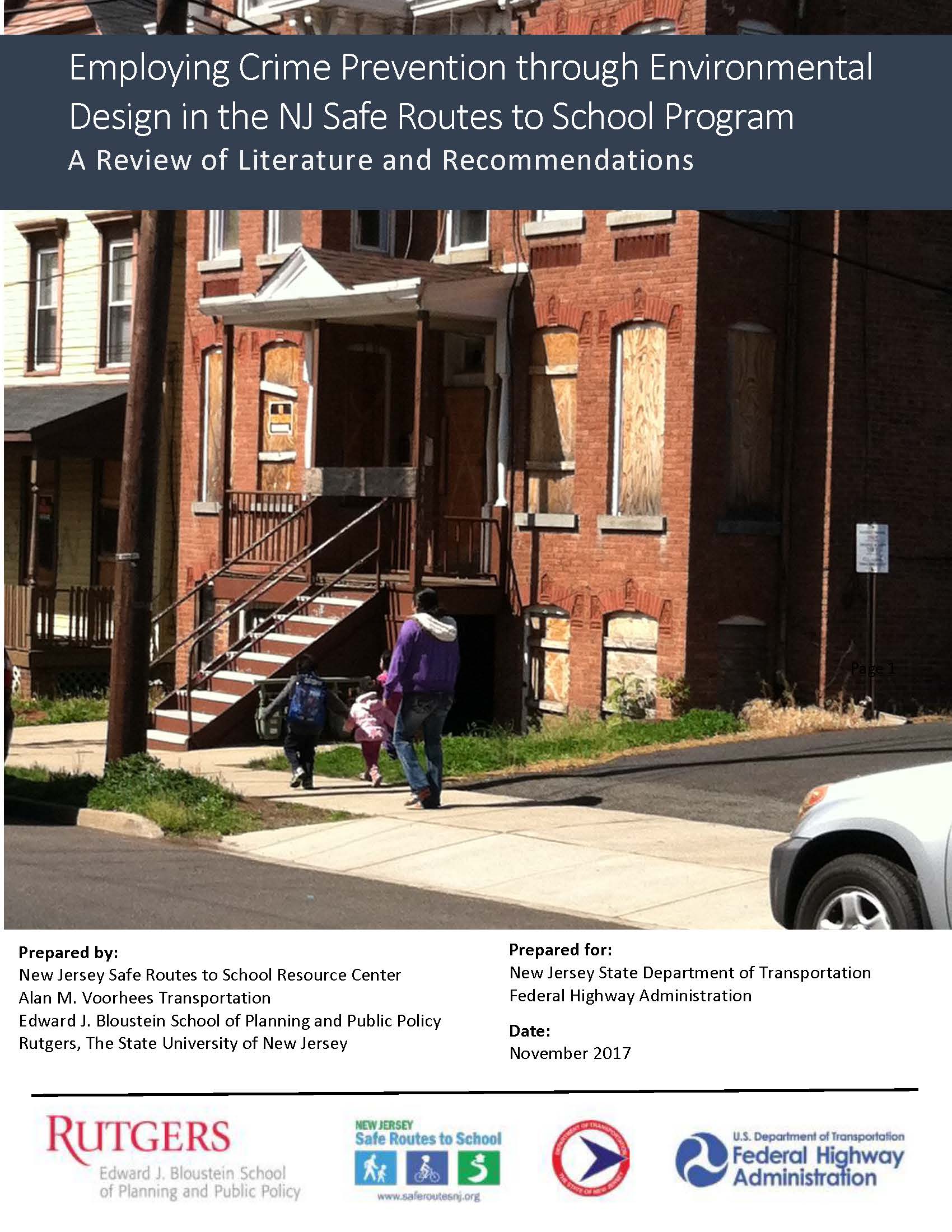This report explores evidence that SRTS programs should address crime-related issues and considers whether Crime Prevention Through Environmental Design (CPTED) is an appropriate planning framework for enhancing the personal safety benefits of SRTS programs. CPTED has been successfully employed in a variety of contexts since emerging in the 1970s, and has recently been the focus of numerous neighborhood and city-wide planning initiatives throughout New Jersey.
Though the theory and practice has evolved since emerging in the 1970s, CPTED may be generally defined as the design or modification of the built environment to deter criminal behavior by influencing offender decisions. In more recent years, CPTED practitioners have expanded the concept to include social arrangements that function in concert with physical design to prevent crime.
After providing background on the practice of CPTED, this report assesses the relationship between actual and perceived crime and walking and biking to and from school; analyzes New Jersey School Travel Plans for crime-related concerns and recommended solutions; reviews the negative impacts of victimization on children and their communities; and presents national examples of CPTED-related solutions applied to school routes. Finally, this report makes recommendations for research and demonstration projects that can serve as steps toward successfully incorporating CPTED assessment tools and strategies into SRTS plans and interventions.
Read the full report:
Employing Crime Prevention through Environmental Design in SRTS: A Review of Literature and Recommendations

